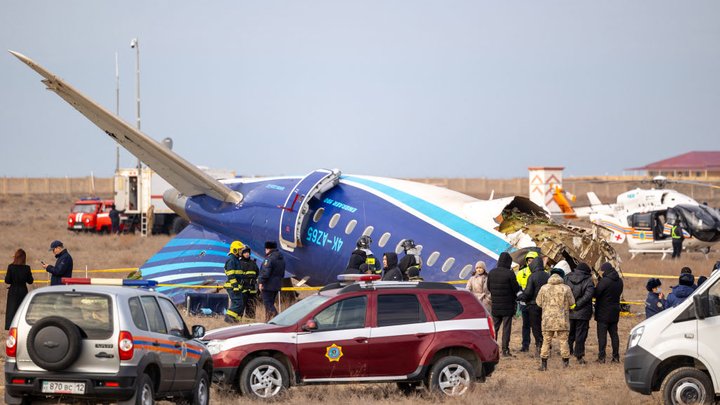The European Union Aviation Safety Agency (EASA) has issued a warning recommending airlines avoid western Russian airspace due to heightened safety concerns stemming from Russia’s ongoing war with Ukraine.
EASA points to the 25 December crash of Azerbaijan Airlines flight 8243 in Aktau, Kazakhstan, as evidence of these risks. The Embraer 190 aircraft crashed after attempting three landings in Grozny, Chechnya, resulting in 38 fatalities, while 29 people survived. Russian authorities have denied air defense involvement, but Azerbaijani President Ilham Aliyev indicated that electronic warfare systems rendered the aircraft uncontrollable, and its tail section was severely damaged by ground fire.
The agency cites potential civil-military coordination problems and risks of misidentification as key safety concerns, particularly as Ukrainian drone and missile strikes have penetrated deep into Russian territory.
The warning highlights that most incidents have occurred in airspace that remained open during drone attacks or air defense activations.
According to EASA, Russian authorities "have not demonstrated full proficiency to address existing airspace risks by implementing an efficient and proactive approach to the airspace deconfliction."
The advisory covers major aviation hubs, including Moscow, St. Petersburg, Rostov-on-Don, Yekaterinburg, and Samara.
Additional technical challenges include disruptions to Global Navigation Satellite Systems (GNSS), with spoofing and jamming reported particularly near the conflict zone and drone target areas.
The agency advises air operators to monitor airspace developments closely and follow all aeronautical publications from Russian authorities, as well as guidance from their national aviation bodies.
The warning is part of a Conflict Zone Information Bulletin (CZIB) shared among EU Member States, EASA, and the European Commission to ensure flight safety over areas of concern.
Analysts from Defense Express suggested that the aircraft was likely downed by a Russian Pantsir missile system operating in automatic mode. On the day of the incident, Russian air defenses near Grozny were active, responding to Ukrainian drone attacks.
In response to the incident, the Azerbaijani President ordered the indefinite suspension of flights to seven Russian cities and halted flights of Russian airlines from three Russian cities to Azerbaijan, affecting air connections with ten cities in total.
Uzbek airline Qanot Sharq announced a flight reduction to Russian cities Moscow and St. Petersburg from 20 January to 6 March 2025. Israeli airline El Al also suspended flights to Moscow.
The crash of an Azerbaijan Airlines Embraer 190 was compared to the 2014 downing of Malaysia Airlines Flight MH17 over Ukraine. Experts have noted that the shrapnel damage observed on the Azerbaijani aircraft's wreckage is reminiscent of the damage sustained by MH17, which was brought down by a Russian-made Buk surface-to-air missile.
Related:
- Ukraine’s spymaster Budanov confirms Russia shot down Azeri plane
- Russian Pantsir system likely downed Azerbaijani airliner in Kazakhstan, say Defense Express analysts
- Video evidence points to Russian air defense in Azeri passenger plane crash that killed 38
- Drones target Chechnya, other north Caucasus regions in Russia (video)

